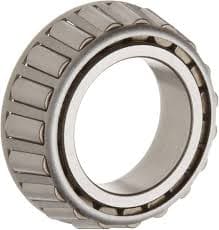WEBINAR
Deep Groove Ball Bearing
Learn More
Tapered roller bearing vibration and troubleshooting is an important monitoring method for detecting bearing operating conditions and possible problems.
Below is some key information about vibration and troubleshooting of tapered roller bearings:
Collecting Vibration Data: Use vibration sensors or vibration measurement equipment, collect vibration data from the bearing at regular intervals. This data typically includes vibration velocity, acceleration, and displacement.
Spectral Analysis: Perform spectrum analysis on vibration data to decompose the vibration signal into components of different frequencies. This can help identify vibration frequencies associated with bearing problems.
Characteristic Frequencies: Characteristic frequencies of tapered roller bearings typically include the bearing frequencies of the rollers, inner and outer rings, and the roller radial frequencies. The presence of these frequencies may be an indication of bearing failure.
Vibration Amplitude: Observe changes in vibration amplitude, especially at different frequencies. Abnormal vibration amplitude may be indicative of a malfunction.
Rolling Element Damage: When bearing rollers or balls are damaged, characteristic frequencies usually appear in the vibration spectrum. This can be detected by analyzing the spectrum.
Damage to the Inner and Outer Rings: Damage to the inner and outer rings is usually characterized by periodic vibrations, which can be detected by observing vibrations at specific frequencies.
Lubrication Problems: Inadequate or contaminated lubricants can cause abnormal vibration. Observing low frequency vibrations in the vibration spectrum can indicate a lubrication problem.
Murmurs and Noises: Abnormal noises can also be indicative of bearing problems. Often a combination of vibration data and sound is required for diagnosis
Elevated Temperature: When a bearing fails, it is usually accompanied by an elevated temperature. Periodically checking the temperature of the bearing is also a diagnostic method.
Visual Inspection: Regularly inspect the appearance of bearings, including rollers, inner and outer rings for wear, damage and abnormal hot spots.
Fault diagnosis often requires a combination of techniques and data sources, including vibration analysis, temperature measurements, sound analysis and visual inspection. Regular monitoring and maintenance of bearings can help detect problems early and take appropriate repair action to minimize downtime and repair costs. Therefore, a preventive maintenance program for vibration and fault diagnosis is recommended in machines or equipment that use tapered roller bearings.
WEEYH is jointly formed by China's top agricultural machinery parts factories, focusing on the R&D and production of agricultural machinery parts. About 200,000 sets of agricultural machinery related parts are produced by WEEYH'S factories and sent to the world every year.

We have a top testing laboratory, from material analysis to finished product inspection, each link has a corresponding testing process. More than 30 kinds of testing equipment have built the guarantee of WEEYH safety.

Call for online customer support get FREE BEARING SAMPLE
Online Quotation